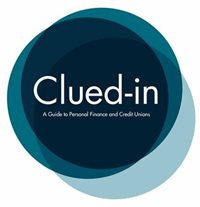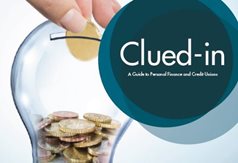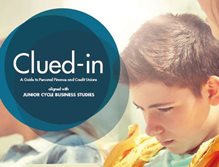Secondary School Financial Education Resource
Clued In is a resource aimed at teachers educating second level students which explains personal finance and the role of credit unions.
Clued In

Overview
Clued-In is a resource aimed at second level students which explains personal finance in a concise, easy to follow, engaging format. The resource helps students to explore their relationship with money, the good and bad, and to look at ways that they can make smarter, more informed decisions.
Who is it aimed at?
Clued-in General Version (ROI & NI)
 In ROI, the resource is principally aimed at Transition Year Students, but it is also very relevant for students of Business Studies and Home Economics. It may also be applicable for elements of the Leaving Cert Vocational Programme.
In ROI, the resource is principally aimed at Transition Year Students, but it is also very relevant for students of Business Studies and Home Economics. It may also be applicable for elements of the Leaving Cert Vocational Programme.
In NI, the resource is an opportunity for pupils in Key Stage 3 and Key Stage 4 to engage with issues surrounding money and financial decision making, as well as developing their understanding of Financial Capability. Activities within the resource can be presented to pupils as part of Mathematics and Learning for Life and Work lessons, and may also be suitable in the areas of economics/business studies.
Teacher Registration
Junior Cycle Business Studies (ROI)
 Clued In has been adapted to align with the Junior Cycle Business Studies curriculum. The Teachers Manual maps out how the resource intersects with the Business Studies curriculum and helps to identify the Learning Outcomes associated with each unit. Clued-in can also be used to support Classroom Based Assignment 1 (Business in Action), CBA2 Presentation, an Assessment Task and a written assessment.
Clued In has been adapted to align with the Junior Cycle Business Studies curriculum. The Teachers Manual maps out how the resource intersects with the Business Studies curriculum and helps to identify the Learning Outcomes associated with each unit. Clued-in can also be used to support Classroom Based Assignment 1 (Business in Action), CBA2 Presentation, an Assessment Task and a written assessment.
Teacher Registration
Clued In Contents
The Clued In resource consists of the following elements:
Clued-In has been designed for delivery by teachers in a classroom setting. The teachers’ handbook accompanying the resource guides the teacher through the resource, highlighting the key discussion points for each slide.
-
Slides for each of the Five Sections
Students are taken through the resource via a set of slides for each of the five units. The slides provide key information on each area of the resource, while and also facilitating, where appropriate, debate and discussion.
-
Activities and Discussions
At various stages through the resource, discussion items and practical activities are utilised to encourage the students to engage with specific topics. Handouts are available which can be used to complete individual or group exercises.
Clued In Sections
The Clued In resource is divided into five sections/ units, each with its assigned learning objectives and activities. The section are as follows:
Money is often important to young people but it can create challenges and worries for them. This section helps students explore what money means to them. It will help students identify how important they perceive money to be, explore the different attitudes people have to money and reflect on the steps which can take to improve their relationship with money.
This section introduce the concept of ‘needs’ and ‘wants’, and discuss how these change as we move through different life stages. The section also develop students understanding of budgeting and make the financial implications of their personal choices. It also explores the factors which influence purchasing decisions. In relation to exercises, students are tasked with developing a budget for a number of teenagers. They are also given some real life budgetary scenarios and challenged to make ends meet when things don’t go as planned!
This section explores particular areas of personal finance. In relation to credit, it analyses the features of the various forms of credit available – personal loans, hire purchase, credit cards, mortgages, moneylenders etc. It explores the factors which lenders use to determine whether to issue credit and how damaging your credit rating can impact on a person’s ability to borrow. The section explores Good Debt (debt that is used for a productive purpose e.g. an education loan) and Bad Debt (unsustainable, high interest forms of credit). It examines credit cards in detail and highlights the advantages, disadvantages and dangers of not repaying credit card bills in full. Finally, it explores the causes of financial difficulty and the warning signs to be aware of. This section has a range of exercises through which students can explore the topics of credit and debt further.
This section explores the role played by credit union in local communities. It highlights how credit unions differ from other financial institutions, with the not-for-profit, member service ethos at the heart of credit unions’ activities. It includes a number of exercises to examine students’ knowledge of credit unions and how they operate.
At the end of the resource, the students may choose to undertake a particularly project related to the above content. These projects are designed to reinforce key learning points of the module content.
Register Now
Teachers can register here to gain access to the materials.
Register for Access